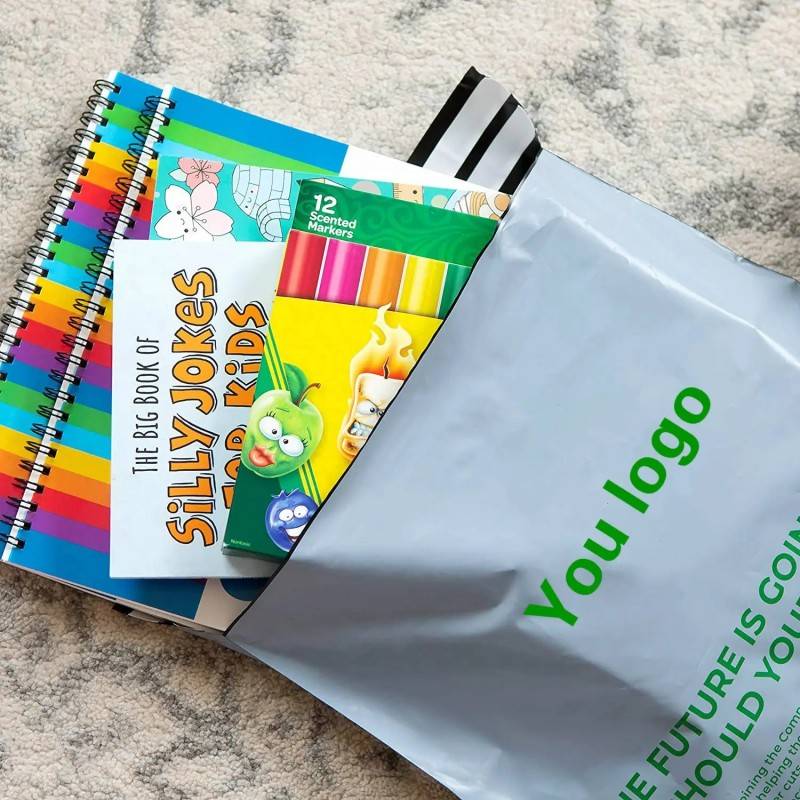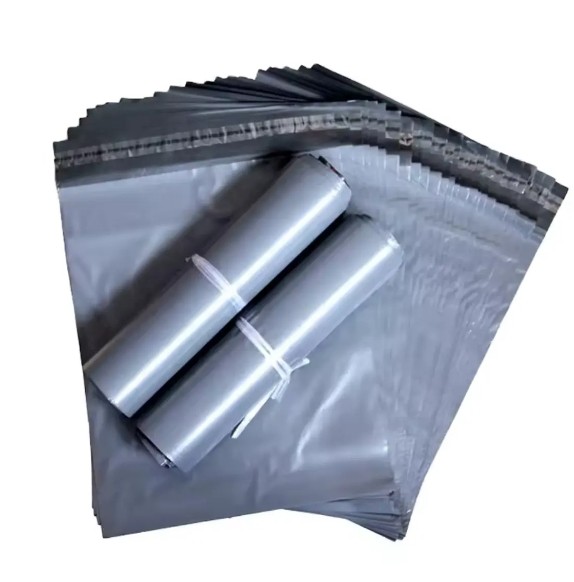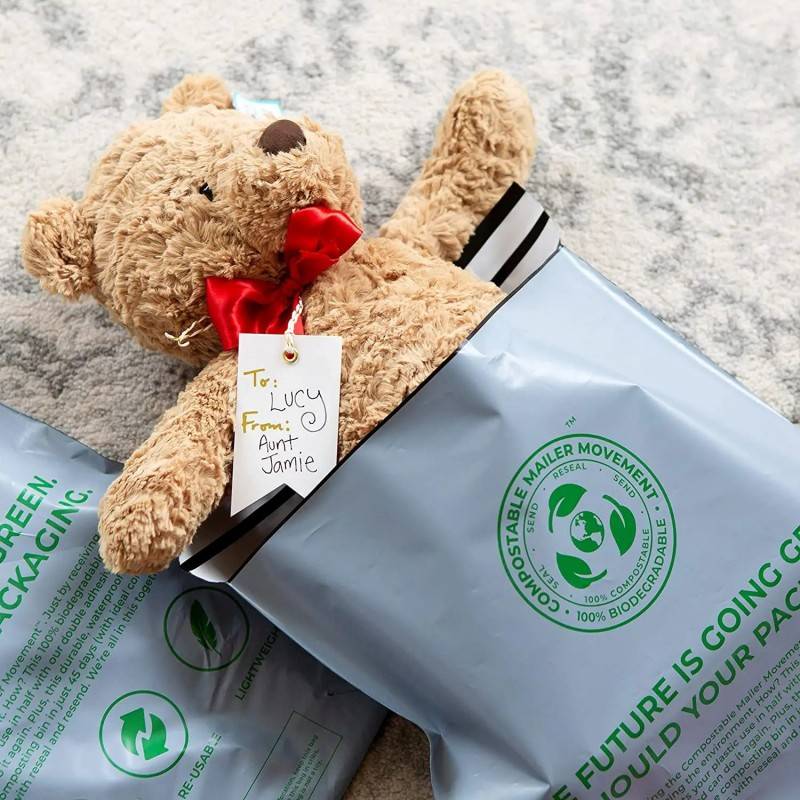What Are Biodegradable Mailing Bags Made Of?
In an era where sustainability is at the forefront, biodegradable mailing bags have emerged as an eco-friendly alternative to traditional plastic packaging. Businesses across industries are increasingly adopting these sustainable solutions to minimize their environmental impact while meeting consumer demand for greener options. But what exactly are biodegradable mailing bags made of? This article delves into the materials and manufacturing processes behind biodegradable mailers, as well as their benefits and how they compare to conventional plastic bags.

1. Key Materials Used in Biodegradable Mailing Bags
Biodegradable mailing bags are crafted from materials that naturally break down over time, leaving no toxic residue in the environment. Unlike traditional plastic bags derived from petroleum-based compounds, these eco-friendly bags are typically made from renewable resources. Here’s a closer look at the common materials used:
PLA (Polylactic Acid): PLA is a biodegradable polymer made from fermented plant starch, commonly derived from corn or sugarcane. It has gained popularity as a sustainable packaging material because it decomposes more quickly than traditional plastics when exposed to industrial composting conditions.
PBAT (Polybutylene Adipate Terephthalate): Often blended with PLA, PBAT is a compostable plastic that enhances flexibility and strength in biodegradable mailers. When combined with PLA, PBAT creates a durable yet fully compostable bag, ideal for shipping and mailing purposes.
Paper-Based Materials: Some biodegradable mailing bags incorporate recycled paper or kraft paper layers for added durability and eco-friendliness. Paper-based biodegradable bags are often reinforced with natural adhesives to ensure strength and resistance while maintaining a fully compostable profile.
Starch Blends: Another popular option, starch blends are made by combining natural starch (from sources like corn, tapioca, or potatoes) with biodegradable polymers. These blends provide strength and resilience without relying on non-renewable resources.
2. The Manufacturing Process of Biodegradable Mailing Bags
The production of biodegradable mailing bags involves an eco-friendly approach to minimize waste and energy consumption. Manufacturers like Green Dot Spring are committed to ensuring that the entire production process aligns with sustainable principles. The general process includes:
Material Sourcing: The process starts with sourcing renewable resources, such as plant starches and sugars, that are processed into polymers like PLA and PBAT. These raw materials are chosen for their ability to decompose under specific environmental conditions.
Blending and Extrusion: The next step involves blending materials like PLA and PBAT to achieve the desired strength, flexibility, and biodegradability. The mixture is then extruded into sheets or films, which will become the main body of the mailing bags.
Printing and Customization: Biodegradable mailing bags are often customized with logos, designs, or other branding elements. Manufacturers use eco-friendly inks and adhesives to ensure that the bags remain compostable and align with environmental standards.
Cutting and Sealing: The final step involves cutting the material into the desired bag shapes and sizes, followed by sealing to create a sturdy, secure product. High-quality sealing is crucial to prevent tearing or damage during shipping.

3. Biodegradable vs. Compostable Mailing Bags
While biodegradable and compostable mailing bags are often used interchangeably, there are distinct differences between the two. Biodegradable bags break down in the environment over time, but this process might still take years, depending on the materials and conditions. Compostable mailing bags, on the other hand, are designed to decompose more quickly in a composting environment, leaving no harmful residues.Green Dot Spring mailing bags, for example, offer compostable mailers wholesale, which means they are engineered to break down in commercial composting facilities. These bags meet strict standards that ensure they will decompose fully and safely, benefiting both the environment and the businesses that use them.
4. Advantages of Using Biodegradable Mailing Bags
Switching to biodegradable mailing bags offers numerous benefits for businesses and the environment:
Reduced Environmental Impact: By using biodegradable mailing bags, companies contribute to lowering plastic waste, which often pollutes oceans and landfills. These bags decompose naturally, reducing the strain on waste management systems.
Eco-Friendly Brand Image: Today’s consumers are more environmentally conscious than ever. By adopting biodegradable mailing solutions, companies can demonstrate their commitment to sustainability, boosting customer trust and loyalty.
Compliance with Regulations: Some regions are enacting stricter regulations on single-use plastics. Biodegradable mailing bags help businesses comply with these regulations, avoiding potential fines and penalties associated with traditional plastic packaging.
Cost-Effectiveness in Bulk Orders: Companies can source biodegradable mailing bags wholesale to save on costs while transitioning to sustainable packaging solutions. With options available for wholesale and custom branding, businesses of all sizes can find an affordable way to make the switch.

5. How to Choose the Right Biodegradable Mailing Bag Supplier
For businesses looking to transition to sustainable packaging, selecting the right supplier is key. A reputable biodegradable mailing bags manufacturer, such as Green Dot Spring, will provide a variety of eco-friendly options, including customization and bulk ordering. Here are a few factors to consider:
Certification and Compliance: Ensure that the bags meet international compostability standards, such as ASTM D6400 or EN 13432. This guarantees that the bags are genuinely compostable and won’t leave harmful residues.
Quality and Durability: Look for mailing bags that offer both durability and biodegradability. The bags should be strong enough to protect products during shipping but designed to decompose after disposal.
Customization Options: Branding is essential for e-commerce and retail. Choose a supplier that can customize bags with eco-friendly inks and designs, helping your business maintain a professional appearance while being sustainable.
Biodegradable mailing bags represent a step toward a greener future by replacing traditional plastics with eco-friendly alternatives. Made from materials like PLA, PBAT, and starch blends, these bags decompose safely in the environment, reducing pollution and supporting sustainability efforts. With reputable suppliers like Green Dot Spring offering biodegradable mailing bags wholesale, companies can easily transition to sustainable solutions without compromising on quality or brand appeal. By choosing biodegradable mailing bags, businesses not only protect the environment but also enhance their eco-friendly reputation, meeting the expectations of today’s conscientious consumers.






